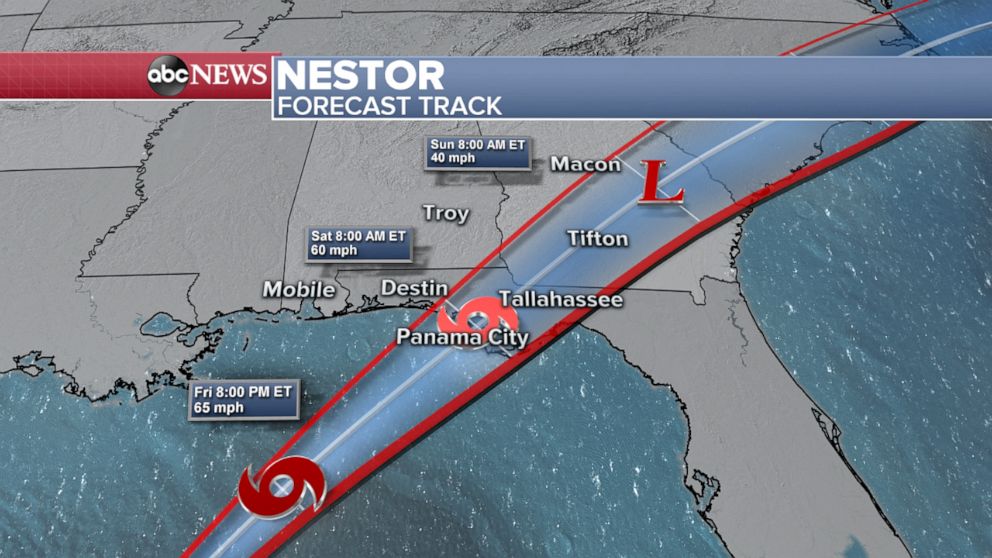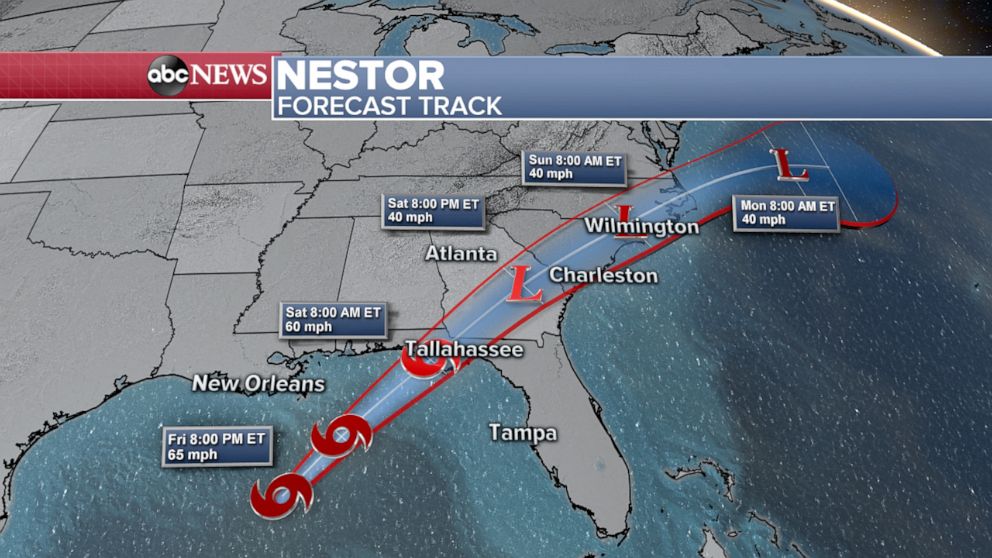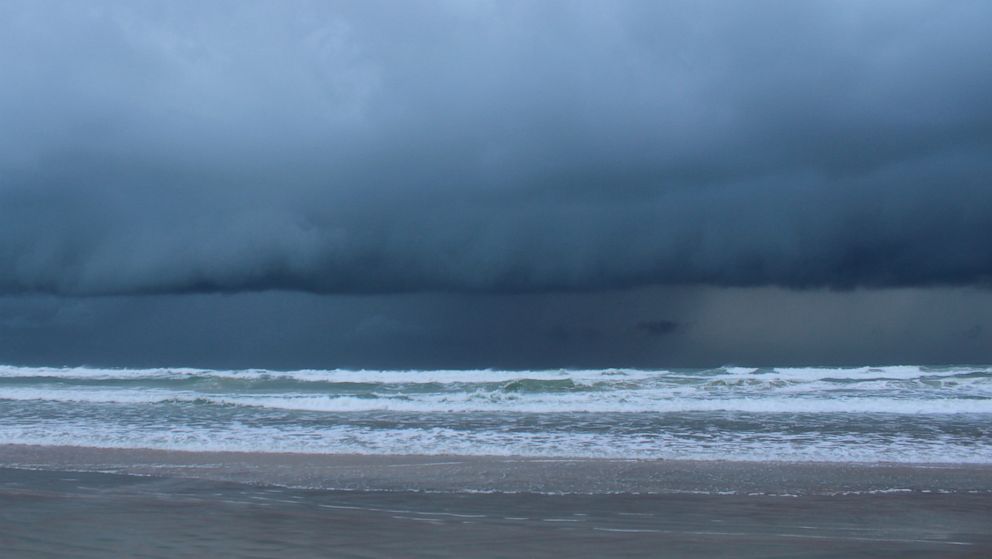[ad_1]
A tropical disturbance in the Gulf of Mexico strengthened to Tropical Storm Nestor Friday afternoon and it’s now taking aim at the Florida Panhandle.
Interested in Weather?
Add Weather as an interest to stay up to date on the latest Weather news, video, and analysis from ABC News.
Nestor is moving quickly and is set to make landfall along the Florida Panhandle between Panama City and Apalachicola on Saturday morning, bringing tropical storm-force winds and dangerous storm surge.
Bands of rain will move in Friday night, and by Saturday morning, Floridians will see heavy rainfall and strong, gusty winds.
 ABC News
ABC News
In the impact zone is Mexico Beach, Florida, which was devastated by Category 5 Hurricane Michael last year.
Mexico Beach resident Gail Evans lost her three-bedroom home from Michael and has been living in her RV for over a year — and now she’s worried about Nestor.
“I hope that it’s not that bad,” she told ABC News Friday. “I’m hoping there’s not a lot of wind to lift anything … everything depends on if it strengthens coming in, which is what Michael did.”
If the wind is significant, Evans said, “I’ll have to leave.”
The biggest threat with this storm will be storm surge, as ocean water could rise up to 5 feet from Apalachicola to Cedar Key, Florida. Water could also rise up to 4 feet as far south as Clearwater.
Storm surge warnings have been issued from Indian Pass to Clearwater Beach.
“Residents should prepare now for the chance of flooding & power disruption,” Florida Gov. Ron DeSantis tweeted Thursday.
Up to 6 inches of rain is possible in the Florida Panhandle.
Winds aren’t forecast to be too strong, with gusts near 50 mph possible.
Because the storm is moving quickly, conditions will improve along the Florida Panhandle mid-day Saturday.
Saturday evening, what’s left of Nestor will move through Georgia and the Carolinas, bringing gusty winds and about 2 to 4 inches of rain.
 ABC News
ABC News
By Sunday morning, Nestor’s remnants will sweep across eastern North Carolina, then move off the mid-Atlantic coast and out to sea.
ABC News’ Victor Oquendo contributed to this report.
[ad_2]
Source link

